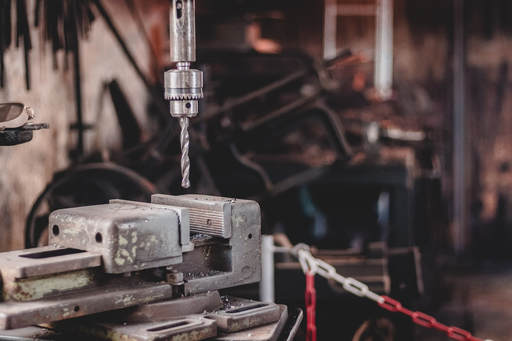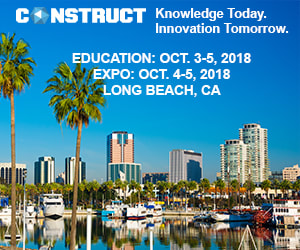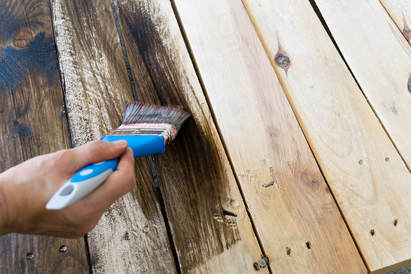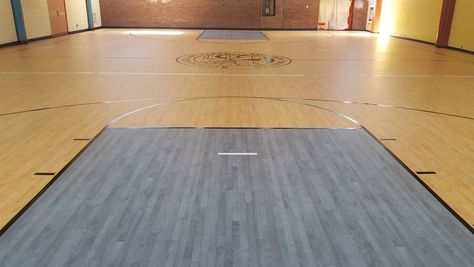|
Contributed by Eric D. Lussier Let’s raise construction as an option in the eyes of the world." This sentence was penned by Thad Goodman, in an article entitled "It's an Image Problem", which you can read here on the Let's Fix Construction blog. Thad also states "one of the bigger issues we have currently is labor. Or should I say a lack of it."
So, when one of the largest private employers in the United States last week announced a $50 MILLION commitment to train 20,000 new construction workers over the next ten years, Thad's concerns from August of 2017 seem to be validated. That employer, The Home Depot, ranks fifth (as of 2016) in total number of employees with 406,000, and while they depend on skilled trades to shop at their establishments across the Nation, they also rely on tradesmen to install construction materials and appliances for their customers directly. In the coverage of the Home Depot news, the USA Today stated that '84% of contractors surveyed by the National Association of Home Builders (NAHB) and Wells Fargo in December cited availability of workers and cost as their most significant problems last year'. Our hope is that more of the major names in the construction industry step forward to address the concern about the lack of the skilled trades, across all industries within AEC. Please read on for the entire press release from Home Depot, which you can also read here. ATLANTA, March 8, 2018 /PRNewswire/ -- Today, The Home Depot® Foundation announced a $50 million commitment to train 20,000 tradespeople over the next 10 years in order to fill the growing skilled labor gap. According to the Bureau of Labor Statistics, there are currently 158,000 unfilled construction sector jobs in the U.S. – a number that is expected to increase significantly as tradespeople retire over the next decade. The ratio of construction job openings to hirings, as measured by the Department of Labor, is at its highest level since 2007. In 2017, The Home Depot Foundation launched a pilot trades training program for separating military members in partnership with nonprofit Home Builders Institute (HBI) on Ft. Stewart and Ft. Bragg. The first set of students will graduate this March. The 12-week pre-apprenticeship certification program, which is provided at no cost to students, uses an industry-based curriculum recognized by the Department of Labor that integrates work-based learning with technical and academic skills. The program, which has a job placement rate of more than 90 percent, will now roll out on additional bases across the United States. “We want to bring shop class back, from coast-to-coast,” said Shannon Gerber, executive director of The Home Depot Foundation. “We’re thrilled to train 20,000 next-generation plumbers, electricians, carpenters and beyond. It’s a true honor to welcome our first classes of separating soldiers as they transition to civilian life and into successful careers in the trades.” “HBI has a 50-year history of training individuals with the skills they need to succeed in the building industry. Our program prepares men and women for high-growth careers in the industry after leaving military service,” said HBI CEO John Courson. “With 200,000 service members separating from the military every year, our partnership with The Home Depot Foundation enables us to serve more veterans across the country.” In addition to serving separating military members, The Home Depot Foundation is establishing an advanced level trades training program in partnership with the Construction Education Foundation of Georgia (CEFGA) for residents of Atlanta’s Westside community. Over the next 10 years, the Foundation will expand training support to include the broader veteran community as well as underserved high schools across the United States. Today’s announcement expands The Home Depot Foundation’s mission beyond its existing quarter-of-a-billion dollar commitment to veteran housing, as well as its commitment to serve communities impacted by natural disasters. About The Home Depot Foundation The Home Depot Foundation works to improve the homes and lives of U.S. veterans, train skilled tradespeople to fill the labor gap and support communities impacted by natural disasters. Since 2011, the Foundation has invested nearly a quarter-of-a-billion dollars in veteran-related causes and improved more than 37,000 veteran homes and facilities. In 2018, the Foundation committed an additional $50 million dollars to train 20,000 skilled tradespeople over the next 10 years starting with separating military members and veterans, at-risk youth and members of the Atlanta Westside community. To learn more about The Home Depot Foundation and see Team Depot in action, visit thd.co/community and follow us on Snapchat, Twitter and Instagram @teamdepot and on Facebook at facebook.com/teamdepot. About HBI HBI is a national nonprofit that provides training, curriculum development and job placement services for the building industry. With overall program job placement rates at over 85 percent for graduates, HBI training programs are taught in local communities across the country to at-risk youth, veterans, transitioning military members, justice-involved youth and adults, and displaced workers. Visit www.hbi.org for more information. ### For more information, contact: Financial Community News Media Isabel Janci Amy Crouse Investor Relations Public Relations 770-384-2666 770-384-2467 Isabel_Janci@homedepot.com Amy_Crouse@homedepot.com
3 Comments
Contributed by Randy Nishimura Unless you’ve been living under a rock lately, you’re probably aware of the growing interest in and use of mass timber as a construction system in increasingly significant (larger and taller) buildings. I wrote previously following a tour last year of a CLT plant in Riddle, OR, architects are quickly latching onto mass timber because of its sustainable attributes. Mass timber structural products can outperform steel and concrete, whether the metric used is embodied energy or the amount of air and water pollution produced during their extraction and processing. Additionally, wood products sequester carbon and are derived from renewable resources.
Despite the greater awareness and appeal of mass timber as a viable alternative to steel and concrete for primary structural systems in larger buildings, its use remains a challenge because current building codes have been slow to recognize its inherent fire-resistive properties, resilience, and ability to be assembled by means capable of resisting seismic forces comparable to steel or concrete alternatives. A recent CSI-Willamette Valley Chapter meeting was a real treat, as Eric McDonnell, a structural engineer and associate with KPFF, built a solid case in favor of mass timber construction systems. As someone who’s been at the forefront of the development of emerging industry standards for CLT use, Eric was eminently qualified to deliver a technically comprehensive, yet concise, primer on the topic to our audience. Eric originally joined the KPFF San Francisco office in 2005, but left in 2010 to respond to a strong need in New Zealand for structural engineers capable of completing damage assessments and helping with the rebuilding process following the Canterbury Region earthquakes. He rejoined KPFF after two years of work in Christchurch, relocating to the firm’s Portland office. Eric’s experience in Christchurch proved invaluable, as the damage wrought by the massive earthquakes served as a real-world laboratory for him and other structural engineers. Eric could see firsthand how the buildings there—designed and constructed in a similar fashion to those here in the U.S.—had performed. The vast majority of buildings engineered to meet modern codes did achieve their life safety performance objective; however, the central business district was cordoned off for two years and more than 1,000 buildings ultimately were demolished because the cost to repair them was too great. In that aftermath, public entities, engineers, and the general public began to ask whether it was reasonable to expect better outcomes in the wake of a seismic event. The notion of low-damage or resilient design took off in earnest. Contributed by Cherise Lakeside Once again in 2018, Eric and I are honored to be invited back to participate on the CONSTRUCT Education Advisory Council. CONSTRUCT, which will be held in Long Beach, CA from October 3-5, 2018, is the only dedicated national trade show and educational conference for the commercial building teams that spec, source and purchase building products and coincidentally, is where he and I met in Phoenix in 2011. The Advisory Council is a group of 13 professionals from a variety of disciplines in Architecture, Engineering and Construction that represent a wide range of experience and expertise. We work together to review and select from the submissions to present at CONSTRUCT to help create the best slate of educational content possible. You can read the full press release from Informa immediately below this post.
CONSTRUCT and Let’s Fix Construction share a similar mission. It is a mission of bringing many members of our industry together where we can learn, share and grow as professionals. Not only does this help us do our own job better, but it also increases our awareness and knowledge of how other members of the project team approach the same topics and issues. This fully open lens and view of the challenges we face every day is a game changer. We would like to personally invite our readers and/or listeners to bring their expertise to the table. CONSTRUCT is looking for a wide range of topics for the event in Long Beach in October. All of the information and the submission form can be found on the Call for Sessions page at the CONSTRUCT website. Proposed presentations are welcome from anyone who works in the built environment are are due by January 31, 2018. We want you! You can also hear more about CONSTRUCT and the Call for Sessions on our latest podcast, which you can listen to on your favorite podcast player, or here: www.letsfixconstruction.com/podcast/ep-004. We hope to see you in Long Beach! Official Press Release - CONSTRUCT Call For Sessions CONSTRUCT 2018 invites application submissions to present at the 2018 event, taking place on October 3-5 at the Long Beach Convention and Entertainment Center in Long Beach, CA. CONSTRUCT welcomes compelling proposals that address a wide range of topics relevant to the commercial building team and those who design, build, specify, engineer, renovate and operate in the built environment. With over 40 accredited sessions and non-conflicting exhibit hall hours, the education program is an integral part of the CONSTRUCT event experience for specifiers, architects, designers, product reps, contractors, engineers, project managers, and other industry professionals. Seeking dynamic speakers with a firm grasp of technical issues, including building scientists, researchers, architects, specifiers, contractors, owners and code experts, sessions are 60 – 120 minutes in length and should contain timely, practical information and solutions that can be immediately implemented in the workplace. "Our goal for 2018 is to provide unique and engaging educational experiences utilizing a combination of learning formats, from case studies and panel discussions to small group discussions and hands-on learning. Additionally, our participants are hungry for intermediate to expert level content that they can’t get anywhere else" said Jennifer Hughes, Informa Education Manager. "We encourage dynamic professionals from all areas of the industry who can offer solution-based content, to submit a proposal.” Topic submissions should focus on applications-oriented, real world, problem-solving topics and be free of promotional materials to sell a product or service. The multi-track educational program includes technical and design oriented sessions, as well as business-related sessions including project management and legal topics. The deadline for submitting a proposal is January 31, 2018. Session proposals should be submitted via the automated submission form at https://www.constructshow.com/en/education/speaking-opportunities.html. Questions should be directed to Jennifer Hughes, Informa Education Manager, at Jennifer.Hughes@informa.com or 972.536.6388. For information about CONSTRUCT, please visit www.CONSTRUCTshow.com or call (866) 475-6707 or (972) 536-6450. Additional show information can be found on Facebook at http://www.facebook.com/constructshow, Twitter at http://www.twitter.com/constructshow and Instagram at http://www.instagram.com/construct_show. Twitter users can follow the show using #CONSTRUCT About the Event CONSTRUCT is your most cost effective strategy for combining educational opportunities with practical, real-world, product and service solutions for your business success. This event is dedicated to the institutional, industrial and commercial building industry. If you design, build, specify, engineer, renovate or operate in the built environment, this is your event. The show is owned and produced by Informa Exhibitions U.S., Construction & Real Estate. For additional information, contact CONSTRUCT at P.O. Box 612128, Dallas, Texas 75261-2128; call the main show line at (866) 475-6707 or (972) 536-6450. About Informa Exhibitions U.S., Construction & Real Estate Informa operates at the heart of the Knowledge and Information economy. It is one of the world’s leading business intelligence, knowledge and events businesses with more than 6,000 employees in over 100 offices across 25 countries. The Dallas Exhibitions team produces a portfolio of 15 trade shows in various sectors of the construction and real estate industry. To learn more, visit www.informaexhibitions.com. Contributed by Elias Saltz Writing posts about specific misconceptions has got me thinking about the nature of misconceptions in a more general way. I have questions about their origins and their ability to linger, and how they differ from other types of beliefs.
Misconceptions, especially about the kind of things I’m writing about here, seem like they should be less tricky to dispel than other beliefs because they don’t usually embed themselves with their holders’ personal identities. I don’t see people getting emotionally attached to their beliefs and preferences pertaining to different types of sprayed fireproofing, for example. Still, it takes a certain amount of self-awareness to examine and question your knowledge. When incorrect information is passed along as ‘rules of thumb’ or ‘common knowledge,’ are you curious enough to ask the question, ‘what do I think I know and how do I think I know it?’ It’s difficult to tease out misconceptions because they feel like facts to us, and we’re subject to confirmation bias - that is, a tendency to use mental tricks to reinforce our beliefs to avoid being wrong. But every ‘fact’ we think we believe should be provisional, subject to updating when we’re presented with compelling contrary evidence. In addition to misconceptions, there’s a lot of pure ignorance about some topics. We don’t know much about them, but hopefully we’re aware enough of our ignorance to not just make up an answer. I chose today’s misconception topic with that in mind; I think that woodwork finishing is a bit of a black box, performed behind the scenes, with systems that are little understood beyond their names. That’s why I approached Margaret Fisher from the Architectural Woodwork Institute, who is also a previous contributor of two articles on Let’s Fix Construction. 06 40 00 - Architectural Woodwork Introduction There is much that can and has been written about architectural woodwork and it’s an immensely broad topic, so this post will limit its focus to finishing systems. AWI’s Architectural Woodwork Standards (AWS) introduces the topic better than I can: “The purpose of finishing woodworking is twofold. First, the finish is used traditionally as a means to enhance or alter the natural beauty of the wood. Second, the finish shall offer protection to the wood from damage by moisture, contaminants, and handling. It is important to understand that a quality finish must offer acceptable performance and also meet the aesthetic requirements of the project.”[1] Contributed by Eric D. Lussier (Editor's Note: Before you start Part 2, please be sure you've read Part 1 here.
CUSHIONED SHEET VINYL Vinyl, namely cushioned sheet vinyl or PVC, is one of today’s most popular synthetic surfaces for sports. Coming from a wide range of manufacturers in a variety of thicknesses, widths, colors and designs, the most common of these floors mimics the appearance of a traditional wood gym floor. Premade in factories the world over, the vinyl is rolled up, packaged and shipped from the factory to a distribution house, the warehouse or a jobsite directly. The playing surface itself is typically pure vinyl and prefinished at the factory. Urethane prefinishes prevent the need to reapply annual finishes and help aid in cleanliness and maintenance of the floor. Any lines, lettering or logos are painted onto the surface of the rolled vinyl in the field. Vinyl surfaces are very popular in elementary and middle schools, but also see installations in high schools, colleges, churches, YMCAs, daycare facilities and more. Built for sport usage of all types, cushioned sheet vinyl systems are heavily used for multipurpose areas. As water and liquids do not harm or, typically, stain the floor, it is common to see cafeteria and gymnasium hybrids — cafetoriums — receiving these types of floors. URETHANE Once prevalent, full-depth urethane surfaces have been mostly phased out and are now pad-and-pour or sandwich systems. Incorporating a recycled rubber pad that is adhered directly to the substrate or a slipsheet, the rubber has its pores sealed and is then coated with a 2 mm or 3 mm urethane lift. The lift is then coated with a color layer, offering one of the most popular synthetic surfaces on the market, which is also completely seamless. Ideal for multipurpose usage, the overall resiliency of the rubber pad is more suited for heavy loads over the closed-cell foam of a cushioned sheet vinyl. While 4 mm, 7 mm and 9 mm are the most prevalent rubber pad thicknesses on the market, almost any thickness is available. With all components manufactured in the factory, the pore sealer, urethane lift and painted wear layer are shipped to the job in pails in two- or three-part kits. Dozens of pails are mixed onsite, making conditions such as heat and relative humidity in the climate-controlled space to be of the utmost importance. Products are hand troweled or hand rolled upon the surface, and the final painted wear layer can be as thin as a piece of paper. This painted wear layer can wear through in high-traffic areas, and it is typical for the floor to receive a new applied surface periodically, perhaps anywhere from five to 15 years depending on usage. |
AboutLet's Fix Construction is an avenue to offer creative solutions, separate myths from facts and erase misconceptions about the architecture, engineering and construction (AEC) industry. Check out Cherise's latest podcast
Get blog post notifications hereArchives
March 2022
Categories
All
|






 RSS Feed
RSS Feed
